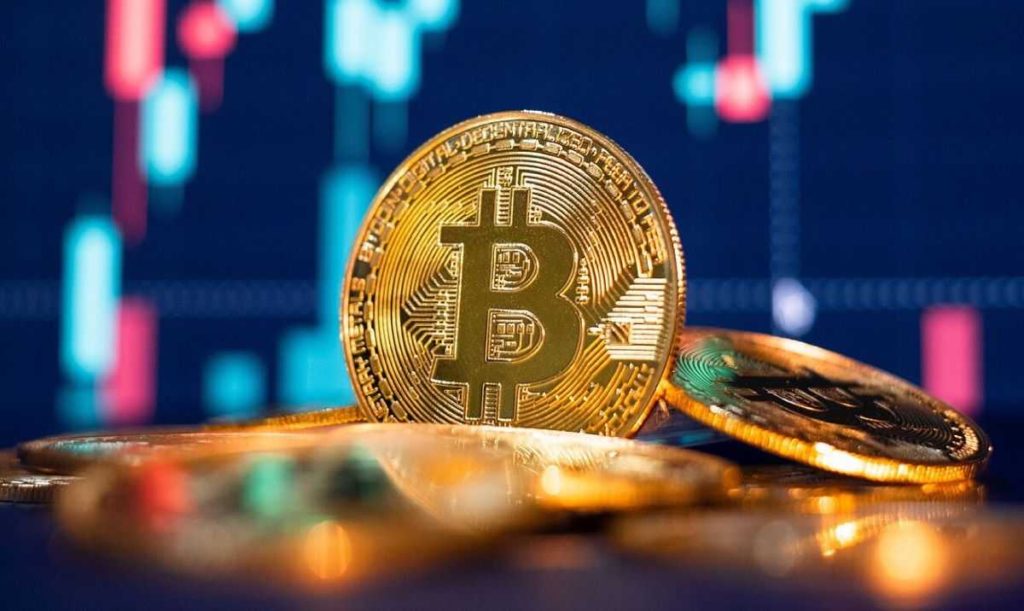The Grayscale Bitcoin Trust (GBTC) might see its BTC price “discount” eliminated by 2024, according to CoinGlass, a monitoring resource.
After Grayscale secured a legal victory over US regulators on August 29th, the declining performance of GBTC could potentially be addressed.
With a holding of over 600,000 BTC, the fund has been trading below the Bitcoin spot price, known as net asset value, since February 2021.
The once-positive “GBTC premium” has been negative for more than two and a half years, but this trend might be reversing soon.
The US Securities and Exchange Commission’s requirement to consider GBTC’s conversion into a Bitcoin spot price exchange-traded fund under the same terms as other applicants pushed the “discount” to its lowest point since December 2021, now standing at just -17%, less than half of its peak around 50%.
CoinGlass expressed optimism in a future recovery: “Expect Grayscale $GBTC premium to close the discount next year.”
Dylan LeClair, senior analyst at digital asset fund UTXO Management, emphasized GBTC’s significance in influencing Bitcoin’s journey to record highs in 2021 due to its vast assets under management.
He noted, “Today’s discount move from -26% to -17% is the equivalent of 56,000 BTC returning to the AUM of $GBTC if shares are marked to market.”
READ MORE: Argo Blockchain Shows Resilience with 50% Reduction in Half-Year Losses
The recent Grayscale development might also impact Bitcoin’s price action by reintroducing key moving averages (MAs).
The 200-week and 200-day trend lines, which failed to provide support during Bitcoin’s previous drop in August, could potentially regain their importance.
Despite BTC/USD struggling to maintain these levels, Rekt Capital, a prominent trader and analyst, highlighted the significance of these MAs in reclaiming bullish momentum.
Rekt Capital noted, “This is great initial momentum from ~$26K support which never broke down to fully confirm the Double Top.”
He also stressed the importance of Bitcoin reclaiming Bull Market moving averages as support to confirm a bullish outlook.
In summary, the Grayscale Bitcoin Trust (GBTC) could reverse its negative price “discount” in 2024, supported by recent legal developments and positive sentiments.
The fund’s large BTC holdings and its potential impact on Bitcoin’s price movement were highlighted, along with the significance of reclaiming key moving averages for sustained bullish momentum.
Other Stories:
Anticipation Grows as Bitcoin Halving Nears, Experts Predict Surge Beyond $100,000
Europe Welcomes First-Ever Bitcoin ETF
Shibarium Surpasses 100,000 Wallets in 24 Hours Post-Relaunch
A federal judge has overturned the United States Securities and Exchange Commission’s (SEC) denial of Grayscale Investments’ exchange-traded fund (ETF) proposal for its Bitcoin Trust.
However, experts caution that this ruling does not guarantee the immediate approval of the first Bitcoin ETF in the country.
Judge Neomi Rao of the U.S. Court of Appeals for the District of Columbia Circuit ruled on August 29 that Grayscale’s Bitcoin ETF plan was “materially similar” to already approved Bitcoin futures exchange-traded products by the SEC.
Rao’s decision largely criticized the SEC’s reasoning for rejecting Grayscale’s ETF, which was based on the ETF not being “designed to prevent fraudulent and manipulative acts and practices.”
Consequently, the matter will be sent back to the SEC for further review.
The U.S. SEC has consistently rejected applications for spot cryptocurrency ETFs thus far. Various applications, including those from BlackRock, ARK Invest, Bitwise Asset Management, and others, are currently under review.
The commission retains the authority to delay decisions on these applications, potentially postponing approvals until March 2024.
The SEC has not yet publicly commented on the appeals court’s ruling, but reports suggest that the commission will assess the case to determine its subsequent steps.
READ MORE: Argo Blockchain Shows Resilience with 50% Reduction in Half-Year Losses
While the SEC may contest the ruling, experts speculate that Grayscale’s initial triumph might set a precedent for future approvals.
ETC Group’s CEO, Tim Bevan, expressed confidence that the victory would pave the way for U.S. spot Bitcoin ETFs despite an anticipated SEC appeal.
He predicted a likely mass approval of applications meeting requirements, possibly occurring in the first quarter of 2024.
Alex Adelman, CEO and co-founder of Lolli, contended that the appeals court’s decision would pressurize the SEC to reconsider its stance on spot Bitcoin ETFs.
Adelman perceived the surge in BTC price following the news as a “vote of confidence” in investment products linked to Bitcoin.
The Crypto Council for Innovation (CCI) spokesperson noted that the ruling broadens the scope for various investors to introduce spot Bitcoin vehicles in the U.S., bringing spot Bitcoin ETFs closer to potential launch.
The next steps for Grayscale or the SEC remain uncertain. Grayscale could rework its application to align more closely with a Bitcoin futures-linked ETF.
Alternatively, the SEC might opt for an “en banc” hearing involving all judges on the D.C. circuit, rather than the three who presided over the Grayscale case.
Other Stories:
Shibarium Surpasses 100,000 Wallets in 24 Hours Post-Relaunch
Europe Welcomes First-Ever Bitcoin ETF
Anticipation Grows as Bitcoin Halving Nears, Experts Predict Surge Beyond $100,000
Argo Blockchain, a prominent player in the mining industry, grappled with adverse market conditions and intense competition, culminating in a reported loss of $18.8 million during the first half of 2023.
This figure marked a significant improvement, showcasing a 50% reduction compared to the $39.6 million loss in the same period in 2022.
The company’s efforts to enhance its financial position were evident as it successfully curtailed its debt by $4 million over the course of 2023, leaving a total debt of $75 million.
This achievement underscores a remarkable $68 million debt reduction since June 2022, when the company’s debt had reached $143 million.
Revenues followed a downward trajectory, declining by 31% in comparison to the first half of 2022.
Argo attributed this decline, which resulted in $24 million in revenue midway through 2023, to a drop in the value of Bitcoin (BTC) as well as an upswing in the global hash rate and the resultant network difficulty.
The mining company’s operational statistics indicated a slight increase of 1% in mined BTC, totaling 947 BTC, during the initial half of the year, in contrast to the same period in 2022. It’s noteworthy that the global hash rate surged by 78% in 2023.
As of June 2023, Argo’s financial statement displayed $9.1 million in cash holdings along with 46 BTC.
A pivotal moment in the latter part of 2022 saw Argo secure $7.5 million in gross proceeds through a share placement, attracting both institutional and retail investors.
Although facing the specter of bankruptcy in late 2022, Argo’s interim results for 2023 indicate a resolute intent to enhance its total hash rate capacity to 2.8 exahashes per second (EH/s).
READ MORE: Casino Gender: Which Games Do Men and Women Prefer?
This expansion plan entails deploying 1,628 BlockMiners at its mining facilities located in Quebec.
Furthermore, the company revealed its ongoing discussions regarding the sale of “certain non-core assets” as part of its strategy to mitigate overall debt.
Notably, a transformative sequence of transactions transpired between Argo and Galaxy Digital, involving the sale of the Helios mining facility and associated property for $65 million in December 2022.
This was followed by a strategic refinancing move, resulting in a new $35 million, three-year asset-backed loan with Galaxy, effectively reducing Argo’s total indebtedness by $41 million and streamlining its operational structure.
Matthew Shaw, Chairman of Argo’s board, emphasized the importance of maintaining a sizable fleet of over 27,000 miners, with a significant portion operating through an agreement with Galaxy at the Helios site.
These developments unfolded subsequent to Argo’s financial predicament in late 2022, which prompted the collaboration with Galaxy.
The aftermath of this partnership saw the resignation of Argo’s former CEO, Peter Wall.
Other Stories:
Hashdex Challenges Status Quo with Innovative Approach in Pursuit of Bitcoin ETF Approval
Three Former Team Members Accused of $16 Million Theft from Pepecoin (PEPE) Multisig Wallet
Former FTX CEO Sam Bankman-Fried’s Legal Team Deems Trial Preparations Inadequate
The upcoming Bitcoin halving event, anticipated in less than nine months, has sparked a prevailing belief among analysts and investors that Bitcoin’s value will soar to new heights, potentially exceeding $100,000.
However, the prevailing macroeconomic challenges, the absence of fresh investments into the crypto market, and Bitcoin’s recent price performance, dipping below $30,000, cast doubt on this optimistic projection in the immediate future.
Sue Ennis, the Vice President of Hut 8, shared her insights on the matter during a recent interview with Paul Barron.
Ennis discussed how Bitcoin’s value could breach the $100,000 mark in the coming year and how the halving might impact Bitcoin miners.
Hut 8 presently holds a reserve of 9,152 BTC, with 8,305 unencumbered. The company boasts an installed ASIC hash rate capacity of 2.6 exahashes per second and mined 44.6 BTC in July.
The discussion revolved around whether the increasing complexity of Bitcoin mining could prompt miners to flood the market with Bitcoin.
Notably, Hashrate Index data revealed that surges in mining complexity were often succeeded by drops in Bitcoin’s value.
The interview raised questions about whether miners were selling off Bitcoin due to the impending halving, necessitating more efficient ASICs.
Ennis suggested that the pre- and post-halving price action of BTC might not align with investors’ bullish expectations.
Ennis highlighted unique dynamics within the mining sector, noting that hash rates continued to rise despite Bitcoin’s trading within a particular range. This trend defied conventional wisdom.
READ MORE: Casino Gender: Which Games Do Men and Women Prefer?
She underscored the emergence of new participants in the global Bitcoin network, driven by substantial energy generation, particularly nuclear and renewable, in the Middle East. Unlike US-based miners, these newcomers demonstrated price-agnostic behavior.
To endure the halving’s impact, Ennis proposed diversifying revenue streams for miners.
Beyond Bitcoin mining, miners could explore artificial intelligence applications, allocate warehouse space for GPU-focused AI training firms, offer industrial-level ASIC repair services, or participate in energy initiatives.
Ennis also discussed the potential impact of a spot Bitcoin exchange-traded fund (ETF) launch.
While investors have long anticipated this, regulatory approval has remained elusive.
Ennis believed a spot ETF’s approval would benefit the asset class, yet cautioned that miner equities might face sell pressure as they often functioned as proxy investments for Bitcoin.
Ennis projected a positive outlook for Bitcoin, suggesting a potential price target of $100,000.
She based this on Bitcoin capturing even a small portion of gold’s $13 trillion institutional portfolio, potentially pushing Bitcoin’s price northward.
Notably, the involvement of financial giant BlackRock signaled increased credibility to this outlook.
In summation, as the next Bitcoin halving approaches, predictions of a price surge above $100,000 dominate discussions.
However, economic challenges and recent price trends cast doubt on these predictions, making the future of Bitcoin’s value uncertain in the short term.
Other Stories:
Former FTX CEO Sam Bankman-Fried’s Legal Team Deems Trial Preparations Inadequate
Three Former Team Members Accused of $16 Million Theft from Pepecoin (PEPE) Multisig Wallet
Hashdex Challenges Status Quo with Innovative Approach in Pursuit of Bitcoin ETF Approval
London-based Jacobi Asset Management has unveiled Europe’s inaugural spot Bitcoin exchange-traded fund (ETF), designating it an Article 8 fund under the European Sustainable Finance Disclosure Regulation (SDFR).
Article 8 funds are recognized for their emphasis on “environmental and/or social characteristics.”
The pioneering Jacobi FT Wilshire Bitcoin ETF, launched on the Euronext Amsterdam stock exchange on August 15, signifies Europe’s maiden Bitcoin ETF and aligns with the European Union’s guidelines for environmental, social, and governance (ESG) investments.
According to an August 29 report by Bloomberg, Jacobi Asset Management’s CEO Martin Bednall labeled the ETF as “fully decarbonized,” attributing this classification to its investment in renewable energy certificates (RECs).
However, skepticism arose among academic experts consulted by journalists, who pointed out a seeming paradox: the ETF’s Bitcoin assets possess such high energy demands due to the energy-intensive nature of Bitcoin mining that the volume of RECs needed to offset these demands could potentially surpass the energy consumed by the Bitcoin holdings themselves.
READ MORE: Hashdex Challenges Status Quo with Innovative Approach in Pursuit of Bitcoin ETF Approval
The Jacobi FT Wilshire Bitcoin ETF’s launch transpired over a year later than initially intended in 2022.
Marketed as the leading physically-backed Bitcoin fund, the ETF offers investors an avenue to engage with a financial instrument supported by actual Bitcoin assets.
Since inception, Jacobi Asset Management has consistently underscored the ETF’s eco-friendly profile.
The fund employs external data to estimate the energy consumption of the Bitcoin network, subsequently procuring and retiring RECs.
These certificates are monitored via a blockchain platform, empowering investors to verify the ETF’s assertions of its environmentally conscientious practices.
Other Stories:
Casino Gender: Which Games Do Men and Women Prefer?
Former FTX CEO Sam Bankman-Fried’s Legal Team Deems Trial Preparations Inadequate
Three Former Team Members Accused of $16 Million Theft from Pepecoin (PEPE) Multisig Wallet
Bitcoin mining revenue, often termed as “hash price,” has plummeted to its lowest levels since the downfall of FTX in November 2022, despite the hash rate of the Bitcoin network reaching unprecedented heights.
As of August 18, the Bitcoin network’s hash rate surged to an all-time high of 414 exahashes per second (EH/s), indicating a remarkable 54% increase from the start of 2023 and an 80% surge over the past year, according to data from Blockchain.com.
While this surge in hash rate bolsters the network’s security, the situation isn’t as optimistic for Bitcoin miners.
Revenue for miners has experienced a significant decline, sinking to levels comparable to the market cycle’s nadir of approximately $16,500 in November 2022.
Presently, according to HashPriceIndex, the daily revenue stands at merely $0.060 per terahash per second, a stark drop from early May when the fervor surrounding the Bitcoin Ordinals inscription prompted heightened demand for block space.
Dylan LeClair, a market analyst, noted the juxtaposition of dwindling revenue and the peak hash rate.
READ MORE: IRS Proposes Simplified Reporting for Digital Asset Taxes, Faces Industry Scrutiny
LeClair emphasized that while more efficient mining rigs are continually being developed, a point of balance must be reached, where rising prices compensate for the escalating hash rates to ensure mining remains profitable.
The predicament has led Bitcoin miners to rely on funds generated from stock sales during the second quarter to weather the storm of the bear market.
According to Bloomberg, major publicly traded mining companies collectively raised around $440 million through stock sales in Q2, which temporarily sustained their operations.
Mark Jeftovic, curator of the Bitcoin Capitalist newsletter, highlighted a concerning trend.
Some mining firms, he pointed out, are disproportionately diluting shareholders, an action that could prove detrimental if the rate of dilution outpaces Bitcoin’s value increase.
He metaphorically likened this scenario to moving in the wrong direction on a treadmill, emphasizing the importance of aligning dilution and value appreciation.
In summary, the Bitcoin network’s hash rate has surged to unprecedented levels, bolstering its security.
Nonetheless, miners are grappling with plunging revenues, necessitating price adjustments to ensure profitability amid the soaring hash rates.
Mining companies have turned to stock sales to endure the market’s downturn, while experts underscore the importance of aligning dilution rates with Bitcoin’s value trajectory.
Other Stories:
Bitcoin’s $20,000 Value Holds Steady Over Six Years When Adjusted for Inflation
Former Worldcoin Insider Alleges Unlawful Practices and Mismanagement
Co-founder of Tornado Cash Cryptocurrency Service Released on Bail
The downward trajectory in the cryptocurrency market appears to be reaching its conclusion, as per recent research by JPMorgan.
The bank’s analysis suggests that the majority of long position liquidations have concluded, pointing towards a potential deceleration in the selling trend.
Based on information from a Bloomberg report, JPMorgan’s experts anticipate that the era of liquidations is mostly in the past.
This projection draws from the assessment of open interest in Bitcoin futures contracts on the Chicago Mercantile Exchange (CME), which serves as an indicator of market sentiment and the potency of price movements.
A decline in Bitcoin’s open interest is interpreted by analysts as a possible indication of waning price momentum: “As a result, we see limited downside for crypto markets over the near term.”
The recent dip in crypto prices can be attributed to waning optimism surrounding regulatory advancements in the United States.
On August 26, Bitcoin hovered around $26,000, marking an 11.27% decrease over the past month.
Bitcoin’s value was buoyed in previous months by favorable developments, including applications for the introduction of the first U.S. exchange-traded funds (ETFs) linked to Bitcoin’s actual price.
READ MORE: Co-founder of Tornado Cash Cryptocurrency Service Released on Bail
Prominent names such as BlackRock, Fidelity, ARK Invest, and 21Shares were among those awaiting regulatory approval.
In a positive turn, Ripple Labs secured a partial victory against the U.S. Securities and Exchange Commission (SEC).
Nevertheless, this optimism is fading as traders await crucial decisions regarding Bitcoin ETFs and the SEC’s appeal against Ripple, rekindling uncertainty.
These circumstances collectively contribute to a fresh wave of legal ambiguity for the cryptocurrency market, rendering it sensitive to forthcoming events.
The market’s decline has also been influenced by external factors, encompassing increasing U.S. real yields and apprehensions concerning China’s economic growth.
Other Stories:
Former Worldcoin Insider Alleges Unlawful Practices and Mismanagement
Bitcoin’s $20,000 Value Holds Steady Over Six Years When Adjusted for Inflation
IRS Proposes Simplified Reporting for Digital Asset Taxes, Faces Industry Scrutiny
Paolo Ardoino, the Chief Technology Officer of Tether, has responded to speculations surrounding images of industrial containers circulating online.
These images had led to questions about Tether’s involvement in Bitcoin mining, prompting Ardoino to clarify the situation.
In a recent post on X (formerly Twitter) on August 26, Ardoino provided insights into a photo he shared on August 24.
The picture showcased a container adorned with a photoshopped Tether Energy logo, which piqued the curiosity of many observers.
Ardoino explained that the image depicted a control room at a Bitcoin mining site operated by Tether, which is nearing completion and preparing to begin operations.
However, when pressed about the location of the mining site, Ardoino firmly declined to disclose it.
While he acknowledged that the site is situated in South America, he refrained from divulging further details due to security concerns.
He expressed that the decision to withhold exact locations was driven by a desire to prevent potential harassment of personnel, especially given the presence of Tether critics who have raised doubts about its legitimacy.
READ MORE: Former Worldcoin Insider Alleges Unlawful Practices and Mismanagement
Addressing skeptics who questioned the presence of the Tether logo on the containers, Ardoino clarified that it was a deliberate branding choice.
He revealed that the team had expected the photo to gain media attention and wanted to establish branding.
However, he noted that displaying prominent logos at mining sites could compromise the physical privacy and security of these locations.
Ardoino anticipated that operations at the mining site would commence in September. He conveyed the enthusiasm of the team and their diligent efforts to launch operations within the next few weeks.
This development follows news about Tether’s involvement in enhancing transparency within the Bitcoin mining sector.
In an interview with Cointelegraph on August 17, Ardoino elaborated on Tether’s ongoing work on a mining software named Moria.
This software aims to provide more comprehensive data analytics regarding energy production at Bitcoin mining sites.
Ardoino emphasized the importance of improved analytics and performance evaluation in the realm of Bitcoin mining.
He believes that Moria’s insights into energy usage, especially from renewable sources like wind and solar, could optimize mining operations and boost production.
Other Stories:
IRS Proposes Simplified Reporting for Digital Asset Taxes, Faces Industry Scrutiny
Co-founder of Tornado Cash Cryptocurrency Service Released on Bail
Bitcoin’s $20,000 Value Holds Steady Over Six Years When Adjusted for Inflation
Bitcoin’s on-chain activity is mirroring patterns reminiscent of its surge to record highs in 2021, recent data reveals.
Ki Young Ju, CEO of CryptoQuant, shared insights on the 25th of August indicating a decline in Bitcoin velocity over several years.
At present price levels, Bitcoin has become relatively stagnant, with the absence of any distinct price trend over recent months leading to reduced buying and selling activity.
This inertia is emphasized by the concept of velocity, which gauges the movement of BTC units within the network.
CryptoQuant’s analysis illustrates that, when viewed on a daily basis, this metric is now at levels that were last observed back in October 2020.
The interpretation of this situation can be bifurcated, according to Ki Young Ju. On one hand, it can be construed as positive, as it signifies that larger holders, often referred to as whales, are retaining their holdings.
Conversely, it can be seen as negative since the lack of transfers to new investors could indicate a potential lack of fresh interest.
READ MORE: IRS Proposes Simplified Reporting for Digital Asset Taxes, Faces Industry Scrutiny
Ki Young Ju pointed to a comparable scarcity of substantial trading activity among high-volume investors, suggesting that the market is currently adopting a “wait and see” approach towards Bitcoin.
Earlier this year, the influx of new capital into the crypto space was evident as BTC/USD initiated a winning streak during the first quarter, eventually resulting in a 70% increase.
Notably, the volume data carries added significance.
In late 2020, after hitting a long-term bottom, the rebound in this metric coincided with Bitcoin’s initial ascent beyond the $20,000 mark, ultimately culminating in new all-time highs a year later.
However, a distinction is drawn between the present circumstances and that of the past.
Bitcoin’s current price of $26,000 is marked by a state of overselling, indicated by its daily relative strength index (RSI), as measured by Cointelegraph Markets Pro and TradingView.
As previously reported, the 12-hour RSI reached its lowest point in five years this month and has yet to recover, underscoring a delay in the resurgence of investor interest.
In conclusion, Bitcoin’s on-chain activity is mimicking the prelude to its meteoric 2021 rally, with reduced movement of BTC units and a potential shift in investor sentiment indicating either a cautious optimism or a lack of fresh enthusiasm in the market.
Other Stories:
Co-founder of Tornado Cash Cryptocurrency Service Released on Bail
Bitcoin’s $20,000 Value Holds Steady Over Six Years When Adjusted for Inflation
Former Worldcoin Insider Alleges Unlawful Practices and Mismanagement
Hashdex, a crypto asset management firm, has entered the race to establish a Bitcoin exchange-traded fund (ETF) in the United States.
To secure its spot, the company has filed an application with the U.S. Securities and Exchange Commission (SEC) for a Bitcoin futures ETF that will encompass actual spot Bitcoin holdings.
ETFs are investment vehicles traded on stock markets, deriving their value from an underlying assortment of assets like stocks, bonds, and commodities.
Similarly, Bitcoin ETFs mirror the value of BTC and are traded on traditional stock exchanges, distinguishing them from crypto exchanges.
Notably, Hashdex’s approach diverges from recent filings by sidestepping the Coinbase surveillance sharing agreement.
Instead, it plans to acquire spot Bitcoin from physical exchanges within the CME market.
As disclosed in a 19b-4 filing by NYSE Arca with the SEC, Hashdex aims to incorporate spot Bitcoin into its Bitcoin futures ETF and intends to rename it as the Hashdex Bitcoin ETF.
Industry experts have reacted to Hashdex’s novel Bitcoin ETF proposal. James Seyffart, an analyst at Bloomberg, highlighted the strategy’s exclusive reliance on exchange-for-related-positions transactions.
This technique involves exchanging futures contracts for an equivalent exposure to the spot market, bypassing direct cash purchases from exchanges.
READ MORE: Bitcoin’s Evolution Accelerates: Recursive Inscriptions Unveil New Horizons Beyond Cryptocurrency
Seyffart speculates that Hashdex’s approach might enhance its chances of SEC approval.
This outlook is informed by the regulatory pressure faced by Gary Gensler, influenced by the Grayscale lawsuit, Ethereum futures submissions, and BlackRock’s implementation of the Coinbase surveillance sharing agreement.
Other specialists, such as Nate Geraci, President of The ETF Store, investor Alistair Milne, and finance attorney Scott Johnsson, have also commented on Hashdex’s distinct ETF submission.
They posit that Hashdex’s approach could address certain SEC concerns related to market manipulation and liquidity issues associated with the Bitcoin market.
As of now, the SEC, led by Chair Gary Gensler, has refrained from commenting on the status of spot Bitcoin ETF applications, the influx of Ethereum ETFs, and the potential approval timeline for a spot Bitcoin ETF within the current year.
Other Stories:
Binance’s Russian P2P Crypto Exchange Renames Sanctioned Banks Amidst Controversy
XRP Faces Investor Sell-Off as Whale Transfers 29 Million Tokens Amid Price Dip
Galaxy Digital Poised to Manage FTX’s Recovered Cryptocurrency Holdings







